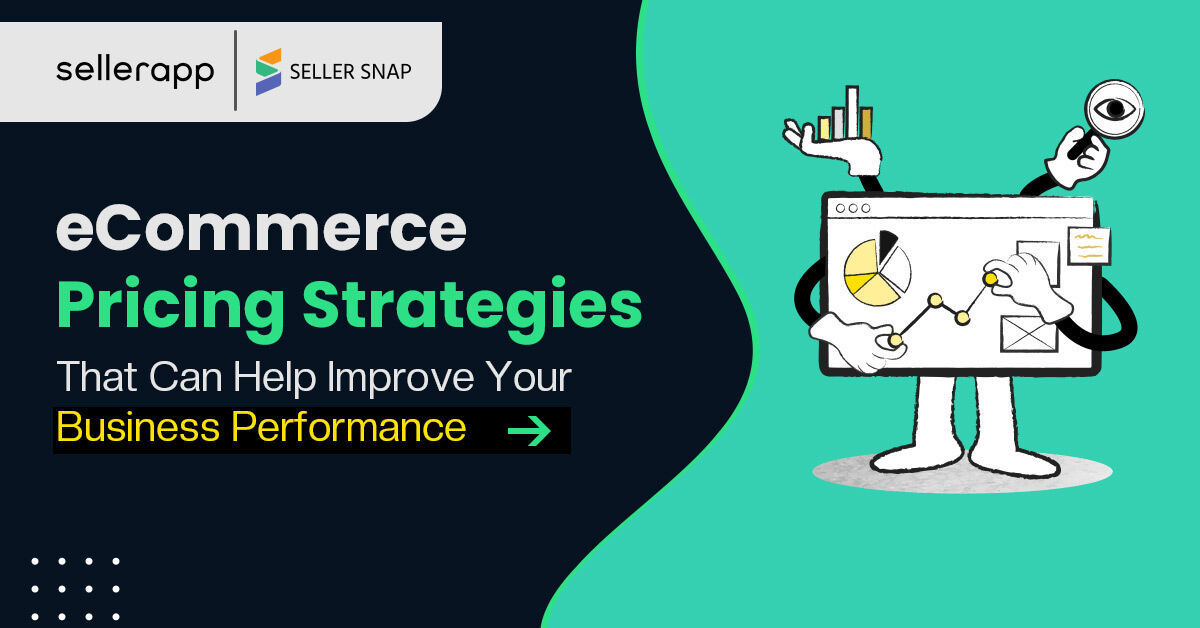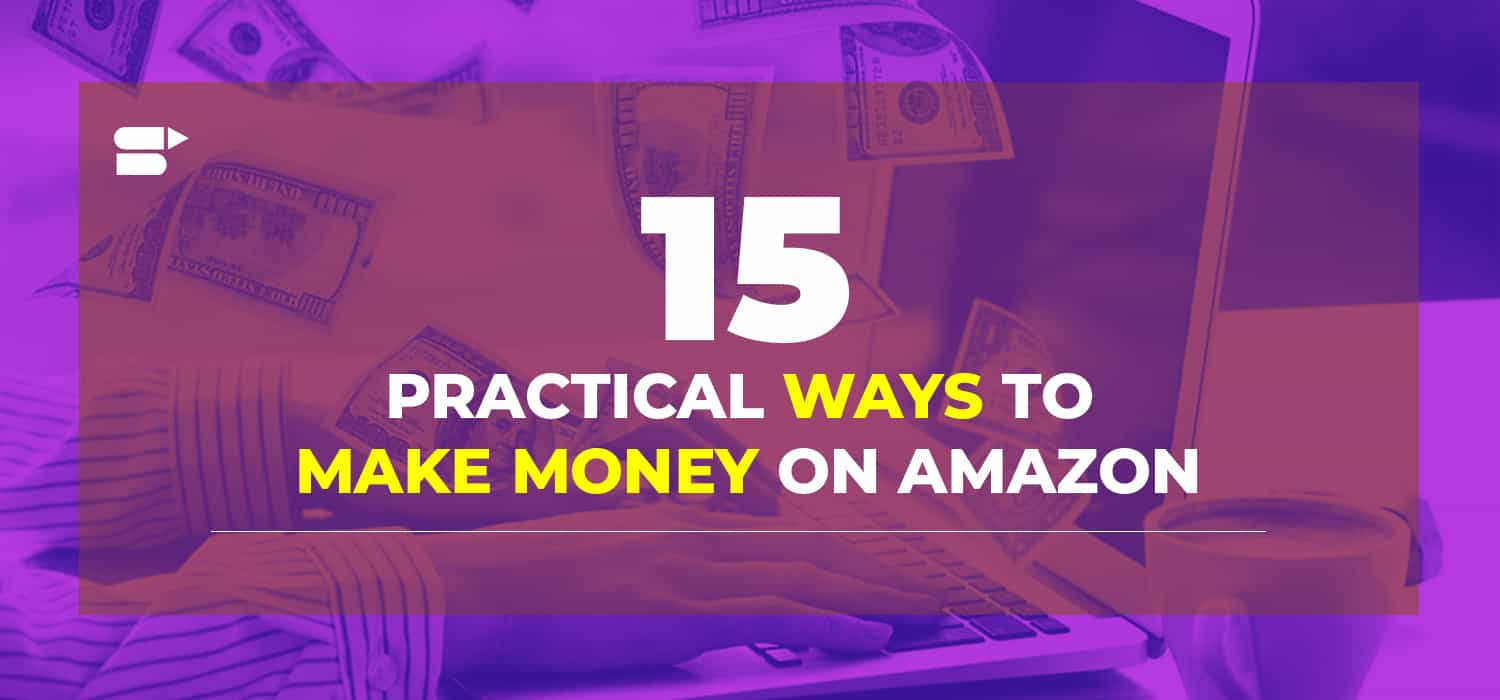Unlock the Power of eCommerce Pricing Strategies for Enhanced Business Performance

Developing a pricing strategy for your eCommerce business can be quite challenging, especially for newbie sellers. Unsystematic price slashing in response to a competitor’s price change is one of the common mistakes of sellers that has been proven detrimental to an online business.
As a responsible seller, you must familiarize yourself with the various pricing strategies to avoid such a mistake and ensure a thriving eCommerce enterprise. In order to equip you with a competitive advantage, we will explore some of the most effective pricing strategies you can use for your eCommerce business.
What is an eCommerce Pricing Strategy, and Why Does It Matter?
An eCommerce pricing strategy does not have a rigid definition, but it can be understood as a structured plan or approach for setting the prices of your product listings after considering multiple market factors. A pricing strategy considers various factors, such as production costs, to arrive at the most optimal price for a product.
Having a well-defined eCommerce pricing strategy is essential for several reasons:
- It allows you to set competitive and profitable prices, ensuring the sustainability of your eCommerce business.
- A pricing strategy helps establish your brand and distinguish it from competitors.
- A good pricing strategy is one of the best ways to get a handle on your returns management strategy, as fairer prices equate to fewer chargebacks.
- It enables you to attract and retain customers through fair and consistent pricing.
Effective Pricing Strategies for eCommerce Businesses
Now that we have established a pricing strategy and its significance, it is time to explore some of the effective pricing strategies you can utilize for your business. We have compiled a list of pricing tactics that can help you optimize your pricing strategy and boost your eCommerce revenue.
Cost-Plus Pricing
The cost-plus pricing method, or markup pricing, refers to adding a fixed percentage on top of the production cost for one product unit. It is a common pricing strategy that is used by retail stores and online sellers where they aim for at least around 30% to 50% profit margin.
To successfully implement this eCommerce pricing strategy, you must understand how to use the cost-plus pricing formula. The formula for cost-plus pricing is as seen below:
Cost + Markup (Profit Percentage) = Price
As seen above, you will need to take your total costs (direct labor costs, manufacturing, shipping, etc.) and add the profit percentage to arrive at a single unit price.
Cost-based pricing is an ideal pricing strategy that small retailers can use for this business. By adding a profit percentage to your total cost, you can easily determine a selling price for your listing to generate profit.
However, before using this pricing strategy for your eCommerce business, you need to consider the demand and competition to avoid overcharging or undercharging for your products.
Penetration Pricing
If you wish to capture a market share, you should understand what a penetration pricing strategy is. Penetration pricing is a popular strategy online sellers and business owners use to attract customers to their new products.
In penetration pricing, the initial offer is lower than the competitor’s price to attract more customers to the product. The theory behind this pricing strategy is that the initial low-price offer can secure market acceptance and capture a market share that will remain loyal once product prices are adjusted to their average level.
To have a successful eCommerce business while using this pricing strategy, you should see to it that there is a high demand for the product you are selling. If there is no significant market for your product, price penetration may be less effective.
Most importantly, when implementing price penetration as part of your eCommerce pricing strategy, gradually raise the product price to its normal level. Making abrupt price changes allows your competitors to perform their own price penetration and take away your customers.
Psychological Pricing
Another intriguing and effective pricing tactic that you should consider is the psychological pricing strategy. This approach harnesses pricing psychology to influence customer purchasing behavior and encourage spending.
This pricing strategy has numerous variations, with “charm pricing” being one of the most commonly used by sellers. As a result, psychological pricing is often referred to as charm pricing.
This method involves setting prices to end in an odd number, like $8.99 or $5.99. This creates the illusion of a lower price and entices customers to make a purchase. It is based on the idea that consumers perceive prices ending in “9” or “99” to be significantly lower than they actually are.
Skimming Pricing
Price skimming is a pricing strategy where a high initial price is set for a product, which is later reduced instead of offering a low starting price. This pricing approach aims to attain high short-term profits and segment customers according to their willingness to pay as the price of the product gradually drops.
The significant advantage of this eCommerce pricing technique is the ability to generate quick revenue and reach the break-even point with fewer sales. However, it is crucial to be prepared to justify the high initial price offering to customers.
Before adopting this pricing strategy, it is necessary to assess whether the market is saturated with competitors, as customers can easily choose from other similar products at a lower price.
Competitive Pricing
One of the most popular pricing strategies in eCommerce is competitive pricing, which involves setting prices based on those of competitors. However, it is essential to remember that pricing should be strategic rather than just a mere reaction to a competitor’s price reduction.
This approach is frequently used by sellers who are in a competitive market with similar products and competing vying for the same customer base. In this situation, sellers have the option to set their prices higher, lower, or at the same level as their competitors.
Although the competitive pricing strategy is uncomplicated and can be combined with other pricing strategies, it can be time-consuming to research competitor prices and change your own prices based on your research. Hence, it is recommended to use an Amazon product price API to collect the necessary data or repricing software that can automate price adjustments for your listings.
For instance, high-volume Amazon sellers do not have the time to modify prices manually, so they use AI-powered Amazon repricers to automate the process.
This software employs AI technology to adjust prices based not only on price change notifications but also on competitor behavior and overall market conditions, ensuring that your listing prices remain competitive while still maintaining a healthy profit margin.
Top Considerations When Developing an eCommerce Pricing Strategy
As discussed earlier, a successful pricing strategy in eCommerce involves more than just looking at your competitors’ prices. Business owners and online retailers should consider other factors as well.
To help you better understand these factors, here are some key considerations to evaluate when developing and executing your eCommerce pricing strategy.
Costs of Goods Sold (COGS)
The cost of goods sold (COGS) is a key factor that should be taken into consideration when setting your price and developing an eCommerce pricing strategy. If you are unfamiliar with the term, COGS simply refers to all direct costs associated with producing and delivering your products, including labor, material, and shipping fees.
To calculate COGS, you can use an online Cost of Goods Sold Calculator or simply use this formula: (Beginning Inventory + Purchase) – Ending Inventory.
Accurately calculating your COGS is critical in determining the minimum price at which you can sell your products while still generating a profit. Once you have calculated your COGS, you can use this information to determine the minimum price you can charge for your product while still covering your costs and making a profit.
Profit Margin Goals
Profit margin goals will vary depending on your business objectives and the competitive landscape of your industry. Setting realistic profit margin goals ensures your eCommerce business’s long-term financial health and growth.
To set a realistic profit margin goal, you need to consider factors including but not limited to COGS, operating expenses, taxes, marketing expenses, target audience, and business size. These factors will help you determine the minimum price at which you need to sell your products to achieve your profit margin goals.
Competitive Landscape
Online sellers must analyze the competitive landscape when developing an eCommerce pricing strategy. It involves researching and understanding your competitors’ pricing strategies and product offerings. Doing so lets you gain insight into their pricing methods and adjust your pricing strategy accordingly.
Seasonal and Market Trends
Another factor to evaluate when developing or choosing a pricing strategy is seasonal and market trends. Understanding these factors helps you identify the ideal time to adjust your listing prices to increase sales and maximize profitability.
For instance, during peak shopping periods like holidays, you may increase your listing prices to take advantage of increased customer demand. On the other hand, during slower months, you may lower your prices to stimulate sales.
Optimize Your Business for Success
In order to increase the success rate of your eCommerce business, you should carefully take into account your product pricing. Your listing price is a critical factor in determining how online shoppers will react to your offer since it conveys the value of your product.
Setting the price too high could discourage potential customers while setting it too low might make them doubt the quality of your product. Therefore, it is crucial to choose the appropriate pricing strategy for your eCommerce business, taking into account factors such as your product, target audience, and competition.
However, it is worth noting that relying on a pricing strategy alone is not sufficient. It is crucial to leverage the potential of other marketing strategies as well. Pricing tactics should be combined with other marketing methods to achieve optimal results.
Additional read:
New ChatGPT prompts to boost e-commerce sales
Who Should Incorporate VCPM Campaigns in Their Advertising Strategy?
Multi Brand Strategy To Help You Systematically Expand Your Brand Reach











Chaitra
March 27, 2023I appreciate the author for shedding light on this important aspect of eCommerce business.
Clare Thomas
March 20, 2024Thank you for reading.
georgia
March 27, 2023A great read for anyone looking to improve their eCommerce pricing strategy.
Clare Thomas
March 20, 2024Thank you.